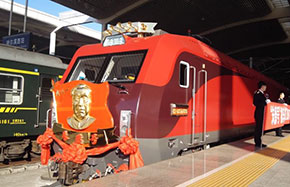Is manufacturing returning from China to the US?
When a Chinese furniture maker announced in November it would open its first US factory in Virginia, Roy Dahlquist, an official with the state's economic development group, said the news signified "a growing trend that manufacturing is returning to the US".
To support his claim, the managing director of Asia for the Virginia Economic Development Partnership cited in an interview with China Daily "four Chinese companies that have established specific manufacturing operations across our state", including an electric generator manufacturer, a tissue converter and another furniture maker. As Dalhquist saw it, the Chinese factory launch in Virginia was not just about creating 125 jobs in the Old Dominion, once a major furniture manufacturing state, but "the psychology of the fact that the industry is returning to some of its roots".
What is true is that various factors, notably the shrinking US-China wage gap and more competitive US energy costs, appear to be causing a trickle of manufacturing jobs lost decades ago to China and other low-cost emerging markets to flow back this way. No actual evidence, however, exists to justify calling this phenomenon a "trend".
Just ask Yingying Xu, an economist with the Manufacturers Alliance for Productivity and Innovation, a Virginia-based manufacturing industry research group. Xu agrees the US's slower-rising labor costs are pulling in new domestic and foreign manufacturing investment. In recent years, China's labor costs have swollen at a 15 to 16 percent annual rate. By contrast, US labor costs have grown at a far-lower 2 to 3 percent rate.
But there's more. Companies that had outsourced production to an emerging market may have neglected to carefully weigh what Xu calls "hidden" costs - including transportation, logistics, intellectual property and other costs related to operating factories thousands of miles away from a home base.
"Some companies might not have thought it through before they originally moved production to China," Xu said. "So now when China's labor costs went up, they started to rethink their strategy to see if it made sense, to produce in China and ship it back to the US market for their US customers." That's where the US's access to cheap natural gas - keeping down energy costs - makes US manufacturing investment look even better.
Xu cautions against calling signs of a pickup in US manufacturing a "trend". A trend is "usually something you have statistics to back it up," she said. "For the past two or three years, we have more people talking about the resurgence of manufacturing in the US. We do hear from the media that lots of big companies, such as General Motors and Ford, have opened new plants in the US to serve US customers," she said.
"You've heard that even smaller companies now feel it makes more sense to produce in the US to serve their US customers instead of producing it in China and shipping it back. This is all anecdotal evidence. I would be hesitant to call it a trend because it hasn't shown up in statistics yet," she added.
What's ahead for the manufacturing industry? "The next several years I would see a more balanced approach," Xu said. "Companies will continue to invest more in emerging markets but over time they will consider opening plants to produce more domestic as well. It will be a more balanced approach than several years ago."
At bottom, the rebalancing will have "insignificant impact on China's growth but it will probably have more impact on US manufacturing production and US economic growth", according to Xu.
The important thing is keeping in mind that "a lot of factors go into manufacturing - it's not just one thing or another."
Contact the writer at michaelbarris@chinadailyusa.com.





















